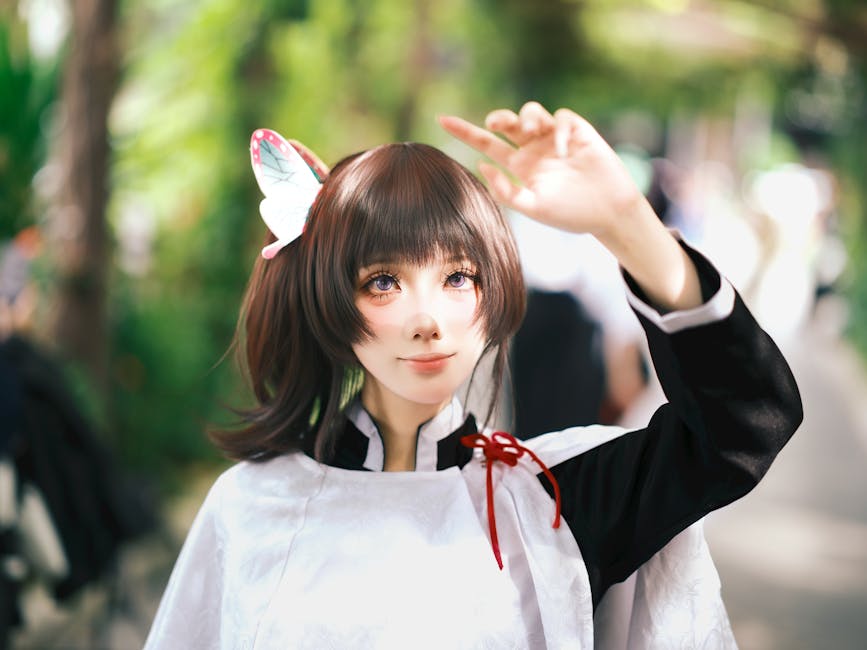Beyond the Pins and Periods: Natalie Unravels Anime 'Turkey!'s Sengoku-Era Summer Tale of High School Girls That's "More Than Just Fun"

Prepare for an anime premise that’s as intriguing as it is unexpected: high school girls, bowling, and the tumultuous Sengoku Period. This captivating combination is at the heart of the upcoming anime, Anime 「Turkey!」, a title that has already piqued the curiosity of many. Japanese entertainment portal Natalie has delved into this unique blend, promising to unravel “a summer story of girls that cannot be described as just fun.”
Unpacking the Paradox: High School Girls, Bowling, and the Sengoku Period
At first glance, the fusion of contemporary high school life, the competitive spirit of bowling, and the brutal, strategic landscape of feudal Japan’s Warring States era seems like an impossible puzzle. Yet, it's precisely this audacious juxtaposition that makes Anime 「Turkey!」 so compelling. Natalie’s feature highlights that beneath the surface of seemingly disparate elements lies a narrative with significant depth, echoing the sentiment that this is a tale “that cannot be described as just fun.”
While the precise nature of how these worlds collide within the anime remains a tantalizing mystery, the mere mention of the Sengoku Period invites us to step back in time. As a historian, I find the prospect of these high school girls navigating themes potentially inspired by such an era utterly fascinating. Let us journey into the heart of this historical epoch, to truly appreciate the potential layers of drama and strategy that Anime 「Turkey!」 might explore.
Stepping into the Sengoku Jidai: An Era Forged in Fire and Ambition
The Sengoku Period (roughly 1467-1615) was a time of relentless civil war, where powerful daimyo (feudal lords) vied for control of Japan. It was an age of ambition, betrayal, and extraordinary strategic genius. Imagine a landscape where loyalty was fleeting, and every action, every alliance, could determine the fate of entire clans. This was not merely a series of battles; it was a complex dance of diplomacy, espionage, and brutal warfare.
Leaders like Oda Nobunaga, Toyotomi Hideyoshi, and Tokugawa Ieyasu rose to prominence through cunning and force, each leaving an indelible mark on Japan. Their lives were a testament to the era's cutthroat nature, where survival often hinged on outthinking and outmaneuvering one's rivals. The stories of these figures are rife with human drama: the tragic betrayal at Honnō-ji, the meteoric rise of a sandal-bearer to supreme power, and the patient, calculated wait for ultimate victory.
Castles: Silent Sentinels of Strategy and Survival
In the Sengoku Period, castles were far more than just impressive structures; they were the very heart of a daimyo's power and the linchpin of their strategic defense. Imagine standing before the towering stone walls of Himeji Castle, or the once-formidable ramparts of Azuchi Castle, Nobunaga’s opulent stronghold. These were not mere homes, but sophisticated fortresses designed for defense and command.
Every element of a Japanese castle, from its intricate system of moats and baileys to its imposing keeps and hidden passages, spoke of strategy. They were built to withstand brutal sieges, to funnel attackers into kill zones, and to provide vantage points for archers and arquebusiers. The drama within these walls was palpable: the desperate courage of defenders during a siege, the agonizing wait for reinforcements, or the strategic retreats and cunning counter-attacks planned in their innermost chambers. A castle represented the will of a lord, the protection for their people, and often, the final stand against annihilation. Their construction and destruction shaped the very landscape and destiny of the nation.
The Echoes of Battle: Strategy Beyond the Battlefield
The strategies of the Sengoku Period extended beyond direct confrontation. It was an era of psychological warfare, economic manipulation, and the masterful use of terrain. Leaders understood the importance of logistics, intelligence, and even propaganda. The impact of this era is still felt today, influencing not just our understanding of Japanese history, but also its rich cultural tapestry, from martial arts philosophies to the disciplined approach found in many aspects of modern Japanese society.
The drive for unification, the establishment of a centralized government, and the eventual peace under the Tokugawa Shogunate were all direct outcomes of this turbulent period. Its legacy continues to inspire countless stories, films, and, evidently, anime, demonstrating its enduring grip on the Japanese imagination.
More Than Just Fun: The Deeper Narratives Unveiled by Natalie
So, how might the profound historical weight of the Sengoku Period intertwine with the contemporary world of high school girls and bowling in Anime 「Turkey!」? Natalie’s emphasis on it being “a summer story of girls that cannot be described as just fun” strongly suggests that the anime will delve into themes of strategy, teamwork, ambition, rivalry, and perhaps even the burden of legacy or the pursuit of a seemingly impossible goal.
Perhaps the bowling alley becomes a modern-day battlefield, where each frame is a strategic move, and the girls, much like Sengoku daimyo, must master their skills, form alliances, and overcome formidable opponents. The “fun” of bowling could be a facade for intense personal growth, unexpected challenges, and the kind of dramatic stakes that define a truly memorable summer story. The "Turkey!" in the title itself might hold a deeper, symbolic meaning, echoing the unexpected turns and triumphs that marked the Sengoku era.
As we anticipate the release of Anime 「Turkey!」, Natalie’s feature encourages us to look beyond the surface. By understanding the historical gravitas of the Sengoku Period, we can better appreciate the potential depth, drama, and strategic brilliance that might be subtly woven into the fabric of these high school girls' summer adventure. It promises to be a narrative that truly lives up to its billing: “a summer story of girls that cannot be described as just fun.”
Comments
Post a Comment